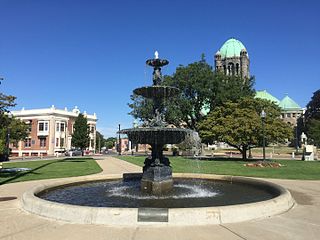
Taunton is a city and county seat of Bristol County, Massachusetts, United States. Taunton is situated on the Taunton River, which winds its way through the city on its way to Mount Hope Bay, 10 miles (16 km) to the south. At the 2020 census, the city had a population of 59,408. Shaunna O'Connell is the mayor of Taunton.

The Boston Manufacturing Company was a business that operated one of the first factories in America. It was organized in 1813 by Francis Cabot Lowell, a wealthy Boston merchant, in partnership with a group of investors later known as The Boston Associates, for the manufacture of cotton textiles. It built the first integrated spinning and weaving factory in the world at Waltham, Massachusetts, using water power. They used plans for a power loom that he smuggled out of England as well as trade secrets from the earlier horse-powered Beverly Cotton Manufactory, of Beverly, Massachusetts, of 1788. This was the largest factory in the U.S., with a workforce of about 300. It was a very efficient, highly profitable mill that, with the aid of the Tariff of 1816, competed effectively with British textiles at a time when many smaller operations were being forced out of business. While the Rhode Island System that followed was famously employed by Samuel Slater, the Boston Associates improved upon it with the "Waltham System". The idea was successfully copied at Lowell, Massachusetts, and elsewhere in New England. Many rural towns now had their own textile mills.

Samuel Leonard Crocker was a businessman and U.S. Representative from Taunton, Massachusetts. Crocker graduated from Brown University, Providence, Rhode Island, in 1822. Throughout his life, he engaged in various manufacturing and civic interests in his hometown of Taunton and throughout Massachusetts.
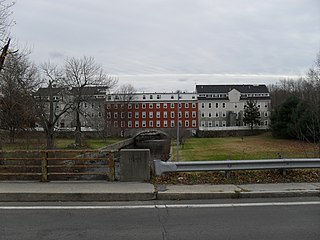
Robert Rogerson was an early American industrialist. He was born in Taunton, Massachusetts, and died in the United States.

The Bridgewater Iron Works is a historic industrial site located on High Street in Bridgewater, Massachusetts, United States, along the banks of the Town River. Previously known as Lazell, Perkins and Company, by the mid-19th century, the Bridgewater Iron Manufacturing Company was one of the largest iron works in the United States, specializing in heavy castings and forgings. The property was later acquired by the Stanley Works, with the surrounding village still known to this day as Stanley.

The Border City Mill No. 2 is a historic cotton textile mill at One Weaver Street in Fall River, Massachusetts. Built in 1873, it is the largest surviving element of the once-sprawling Border City Mill complex. It was designed by Josiah Brown, a prominent local designer of mills, and is one of the city's few brick mills. It was listed on the National Register of Historic Places in 1990. It was converted into residences in the 1980s.

The Taunton Green Historic District encompasses the core area of the historic 19th-century commercial downtown business district of Taunton, Massachusetts. It is centered on the town green, laid out in the 1740s, which now serves at the intersection between U.S. Route 44, Massachusetts Route 140, and Route 138. The district was listed on the National Register of Historic Places in 1985.
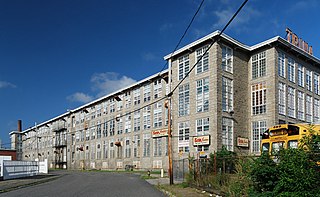
Sagamore Mills No. 1 and No. 3 are two historic textile mills on Ace Street in Fall River, Massachusetts. Built in 1888 and 1908, they form part of one of the city's single largest textile operations of the late 19th century. Mills No. 1 and 3 were added to the National Register of Historic Places in 1983, with a separate listing for Mill No. 2, located nearby on North Main Street.

The Old Colony Iron Works-Nemasket Mills Complex is a historic industrial site located on Old Colony Avenue in the East Taunton section of Taunton, Massachusetts, United States, adjacent to the Taunton River at the Raynham town line. The site was first occupied by the Old Colony Iron Company, which had originally been established in the 1820s as Horatio Leonard & Company. The western part of the complex was sold to Nemasket Mills in 1889. The eastern part was acquired by the Standard Oil Cloth Company. The site was added to the National Register of Historic Places in 1984.

The Cohannet Mill No. 3 is an historic textile mill located at 120 Ingell Street in Taunton, Massachusetts. The mill was built in 1890 and added to the National Register of Historic Places in 2006. It is the only remaining mill of the Cohannet Mills company, founded in 1847 for the manufacture of fine cotton yarns.

Hebronville Mill Historic District is a historic district in Attleboro, Massachusetts. The mill complex includes manufacturing buildings and worker housing.
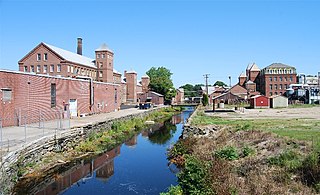
The Reed and Barton Complex is a historic industrial complex at West Brittania and Danforth Streets in Taunton, Massachusetts. It is the site of one of Taunton's first and largest industries, now known as Reed & Barton, a privately held silversmithing business that operated from 1824 to 2015. The company's success was instrumental in Taunton becoming known as the "Silver City". The complex was listed on the National Register of Historic Places in 1984.

The Whittenton Mills Complex is a historic textile mill site located on Whittenton Street in Taunton, Massachusetts, on the banks of the Mill River. The site has been used for industrial purposes since 1670, when James Leonard built an iron forge on the west bank of the river. The first textile mill was built in 1805 and expanded throughout the 19th century. The complex was added to the National Register of Historic Places in 1984, and now contains various small businesses.
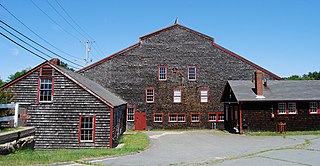
Tremont Nail Factory District is a historic district in Wareham, Massachusetts. It makes up the area occupied by the former Tremont Nail Company.
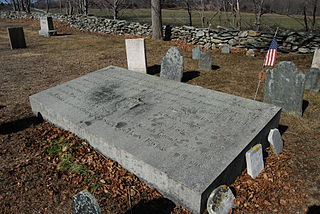
Thomas Baylies was a Quaker ironmaster first in England, then in Massachusetts.
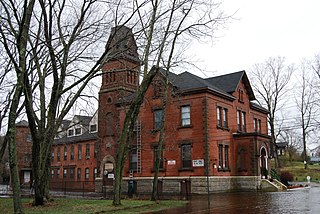
The Albert Field Tack Company is a historic industrial site located at 19 Spring Street in Taunton, Massachusetts, next to the Mill River. Built in 1868 for a company founded in the 1820s to manufacture fasteners, the main office building is an unusually high-style building given its industrial setting. It was added to the National Register of Historic Places in 1984. It has since been converted into apartments.
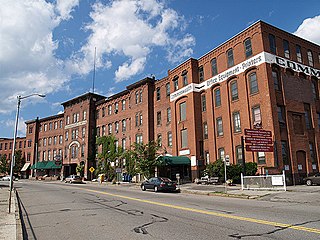
The Washburn and Moen North Works District encompass an industrial complex that housed the largest business in Worcester, Massachusetts in the second half of the 19th century.
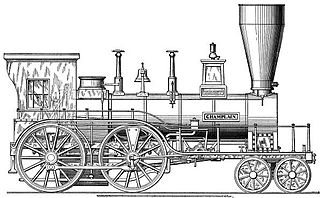
The Taunton Locomotive Manufacturing Company was one of the earliest firms in the United States established especially for the manufacture of steam locomotives. Located in Taunton, Massachusetts, the company was organized in 1849 and incorporated the following year by William A. Crocker, Willard W. Fairbanks, William R. Lee and their associates. Their first engine, the Rough and Ready was delivered in May 1849.

Hopewell is an unincorporated community and former American borough which is located in Chester County, Pennsylvania, United States.

Nahum Stetson was a businessman from southeastern Massachusetts during the 19th century. He is best known for his role in establishing the Bridgewater Iron Company as one of the largest iron works in the United States during the mid-1800s. Stetson was also involved in several other iron companies throughout the southeastern New England region, as well as other notable businesses, including banks and railroads. His grandson, Nahum Stetson (1856-1933) was part of the Steinway & Sons piano company, as part of its sales team and board of directors.























